1. What is NFT?
image description
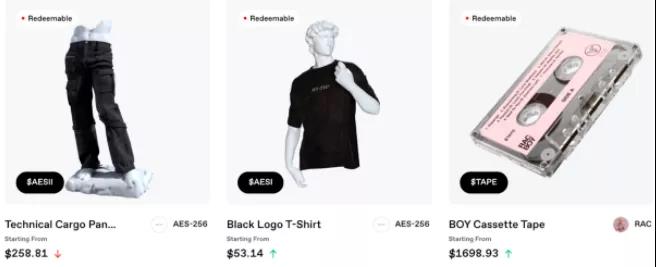
- Tokens can be exchanged for real-world goods on Zora -
Although most NFT projects are currently active in the Ethereum ecosystem, other smart contract platforms can also support NFT. After all, at the end of the day, NFTs are just digital abstractions representing unique assets. "Non-fungible tokens", the term sounds counterintuitive, because in the physical world, we usually don't care about the homogeneity of objects, but when thinking about how to represent assets on the blockchain, homogeneity and whether there are important technical differences. This article does not intend to describe all aspects of NFT in detail, but to provide a high-level overview of what NFT is, why they are interesting, and introduce some of their potential applications.
2. Why is NFT so interesting?
NFTs are powerful because, combined with other financial instruments on Ethereum, anyone can issue, own, and trade them. Therefore, the efficiency of user interaction with NFT is significantly higher than that of traditional platforms. Just as the payment efficiency of cryptocurrency is higher than that of traditional payment, the borderless transaction and the convenience of transfer make the circulation efficiency of NFT higher than that of traditional means. For example, if you are a game developer and want to create tradable game items, then you can use the protocol of the decentralized NFT exchange to immediately give the item transaction attributes. You don't need to create a trading market, and you don't need to go through the entry process of a centralized platform to allow items to circulate.
NFT is not just to support transactions, it can also be used for borrowing, supporting fractional ownership (such as NIFEX) or as collateral for loans (such as NFTfi). The combination of NFT and DeFi can create infinite possibilities. For example, Aavegotchi is a game that combines DeFi and NFT, in which each character represents a user's deposit on the lending platform Aave, and the game characters can fight, upgrade and configure equipment.
- The game attributes of Aavegotchi will change according to the operations on DeFi -
Because NFT is a form of digital ownership, it can be applied in a very wide range of fields, and its current growth in the field of art and games is particularly significant. It should be noted that digital artwork and game props are subcategories classified under NFT collectibles. Additionally, social tokens are sometimes classified under the NFT category, or are considered closely related.

3. Artwork
NFTs make fractional ownership easier, so if an item is too expensive for an individual to buy in its entirety, now they can buy at least a fractional ownership. Although physical objects still need to be kept by reliable people or institutions, they can be issued, held and traded in the form of cryptographic assets, which can unlock more application scenarios. One could even design an NFT where the creator gets a percentage of all secondary sales. In the traditional art field, artists usually cannot get a share of secondary sales.
image description
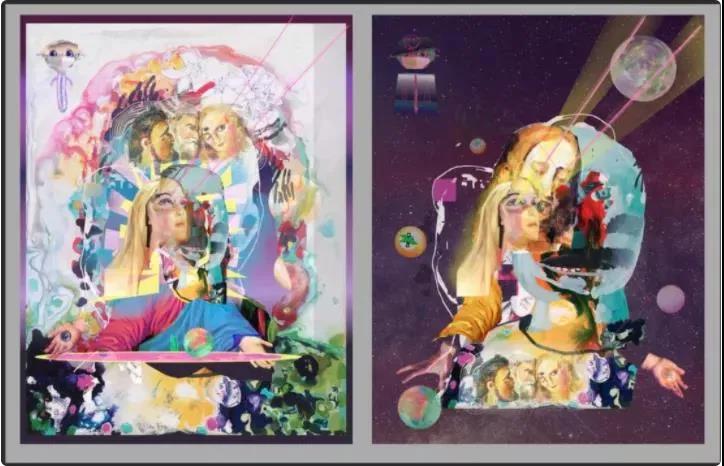
- Rutgur van der Tas' compositions change according to day or night -
image description
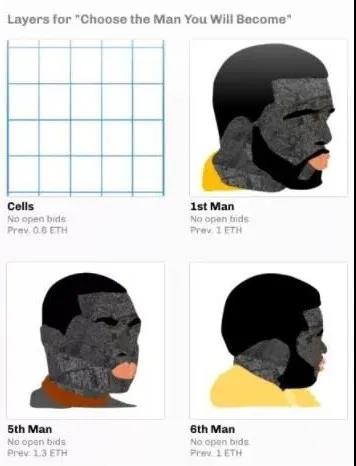
Osinachi artwork, including a master layer and other layers that can be adjusted individually -
image description

- Physical Tokens Sold in NFT by Artist Beeple -
image description
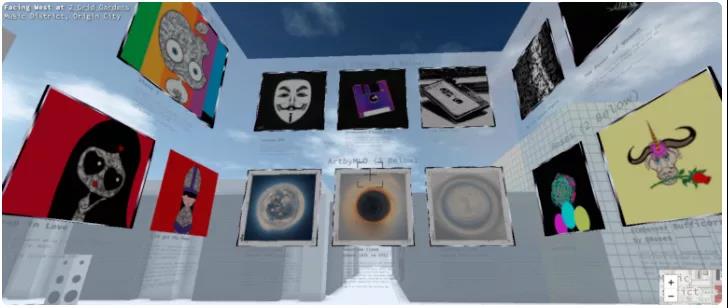
- Digital Art Gallery by Cryptovoxels -
It is often questioned that such digital artworks are not scarce, because they can be easily reproduced in large numbers by taking screenshots or copying digital files. However, similar problems exist even for real objects. Anyone can take a picture of the Mona Lisa, or make a replica of it, but these are not the artist's real work. People are willing to pay a premium for original work. Another interesting thing about digital artwork or collectibles is that you can easily verify their ownership history. Some digital items may be more valuable because someone once owned them.
With NFT, you can also prove the authenticity of the item and prevent tampering. This is a huge problem in the world of physical collectibles. For example, a T206 Honus Wagner baseball card sold to Wayne Gretzky for $451,000 and sold for several million more. However, a seller of the card later admitted in court that he had trimmed the card's edges to make the card look better. In addition, the supply of NFT will not change, and there is no problem of counterfeiting or additional issuance. For example, there are many counterfeit Black Lotus cards in the popular game Magic: The Gathering. Common counterfeit verification methods include bending the card to see if there are any creases, or grading the card through a centralized grading service, which can greatly affect the value of the card.
4. Games
image description
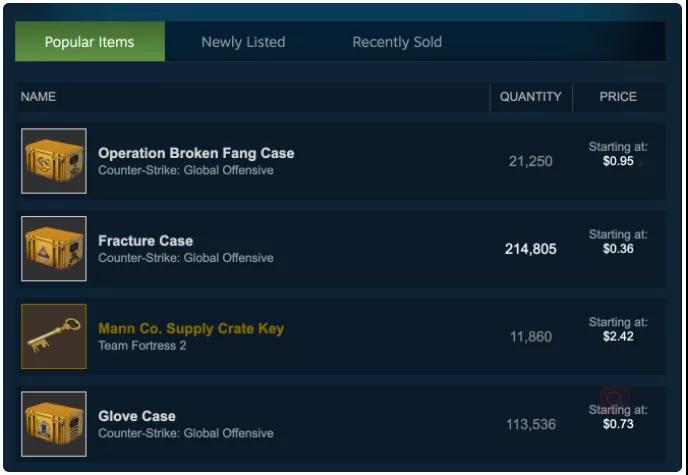
- Steam's Community Market -
Steam also limits users' wallet balances to no more than $2,000 and the price of a single item to no more than $1,800. Although this situation is uncommon, many game items can be sold for higher prices. For example, the price of Dota 2's Skyfire Dog is 38,000 US dollars. In the field of blockchain games, there are also high-priced items for sale, such as the $170,000 CryptoKitty. The coveted Black Lotus card, also in Magic: The Gathering, sold for $166,100. It can be seen that there is of course a demand for valuable props in the game. The decentralized market will not limit the sale and amount of game props.
image description
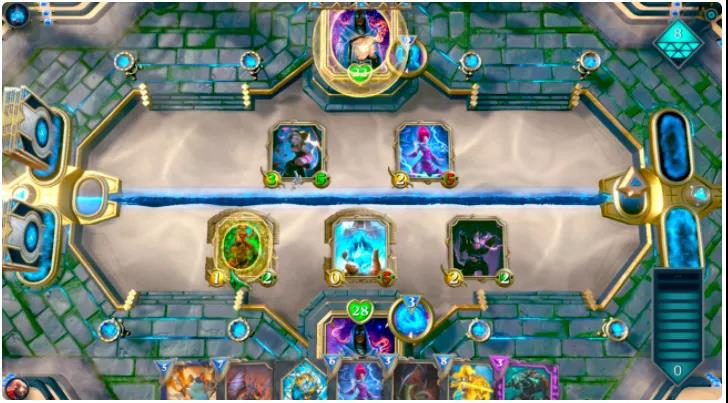
- Gods Unchained game interface -
image description

- Battle scene on Axie Infinity -
image description
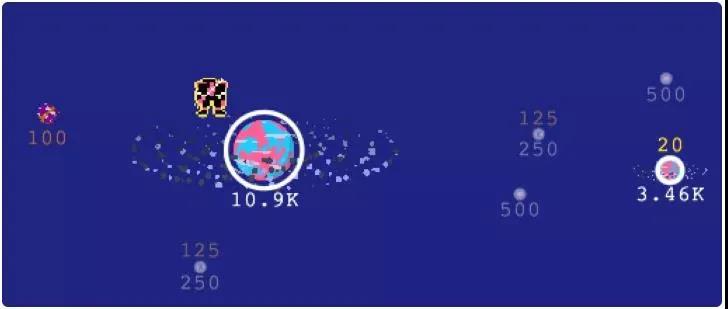
- Odaily with NFT artifacts in "Dark Forest" -
Many people worry that tradable game items will weaken the gameplay, because players will focus on extracting value from the system, or that only players who are willing to pay a large amount of money for items will enjoy the game. Diablo III used to have an auction house where users could exchange in-game items for in-game currency or even cash. But this trading system had a negative impact on the game, so the auction house has been shut down.
Because many players will only buy to get the best loot, it takes away from the fun and motivation of the game. In Diablo III, having the best loot was the basic goal of the game, so having an auction house heavily impacted how the game was played, but other games aren't set up that way. For game developers, it is very important to consider what is tradable (for example, skins can be traded, but weapons cannot be traded; game time can be traded, etc.), and it is very important to find the balance point.
5. Social tokens
image description
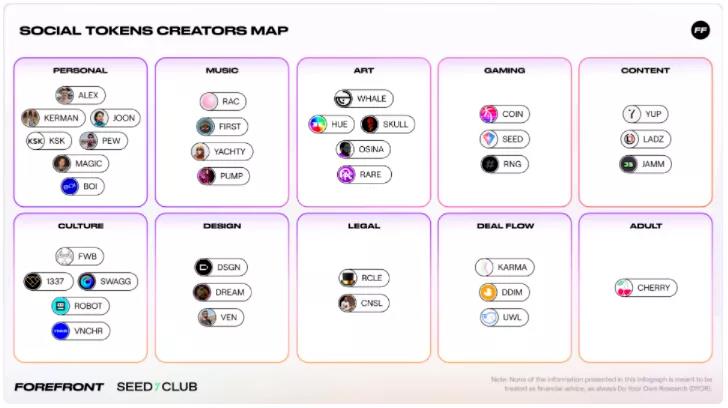
- In the annual review of social tokens, Forefront and Seedclub compiled a list of social tokens -
Early experiments with social tokens involved people tokenizing their time. For example, Reuben Bramanathan, who previously worked in legal and product work at Coinbase, tokenized his time, and 1 $CSNL token is equivalent to 1 hour of his time, which can be traded freely. We also see people trying to tokenize some of their future income. Platforms like Roll and Coinvise make it easier for people to issue their own tokens.
A prominent example of a social token is $RAC, the community token issued by Grammy Award-winning recording artist RAC through Zora. Token holders get access to a private Discord group and early access to merchandise, with more to come. The tokens were initially distributed to his supporters, including Bandcamp and Patreon supporters, people who purchased merchandise, and will eventually be distributed to all Twitch supporters. This allows creators to directly interact with their early supporters and pamper fans with practical actions.
Collab.Land, one of the tools kicking off the new round of social tokens, has created Telegram and Discord bots that can connect to Ethereum wallets to verify applicants’ token balances before joining chat groups. This has allowed us to create token-based access chat groups, such as $JAMM and $KARMA, which help ensure that those who join the group are bonded and share the same interests. Another function of Collab.Land is as a leaderboard, tracking and recording who has contributed the most to the chat group. Imagine being able to reward those with the highest participation in tokens to incentivize active participation.
image description

- Unite.community Token Distribution -
What’s interesting about social tokens is that they can represent anything from a person’s time to a dedicated access to collective ownership of a community. Social tokens have a lot of potential and I expect more creators to issue them in the future.
6. Future
image description
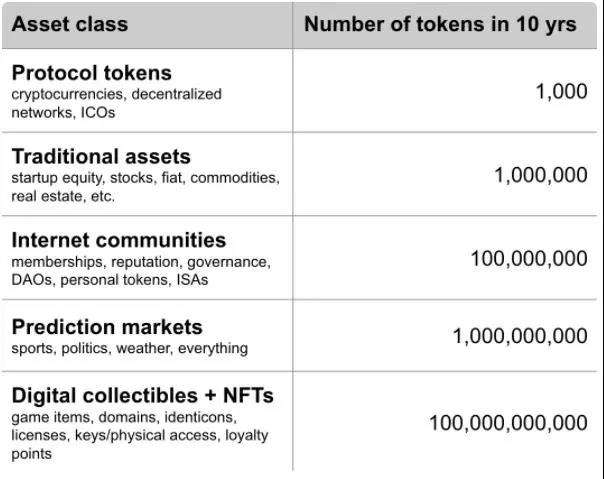
- Table presented by Will Warren on 0xpo -
In order to make NFTs easier to use, there are several aspects of the user experience that need to be improved. First of all, we need to expand the transaction processing capacity of the blockchain, otherwise the high transaction fee will make some transactions very expensive or even unavailable. Scaling research is ongoing. Many different teams in the Ethereum community are working on scaling solutions, and we have also seen some other blockchain projects making related efforts. Another problem with NFTs is that holders need to keep the NFT tokens themselves. However, we can develop user-friendly wallets that support features such as PINs, biometrics, and social account recovery, freeing users from the complexities of wallet custody. I'm optimistic that these improvements will build over time and we'll see a huge wave of innovation and experimentation in the NFT space.
Welcome to WeChat search: [Great Wind Blowing Yuan Universe Guild] official account, learn more information!